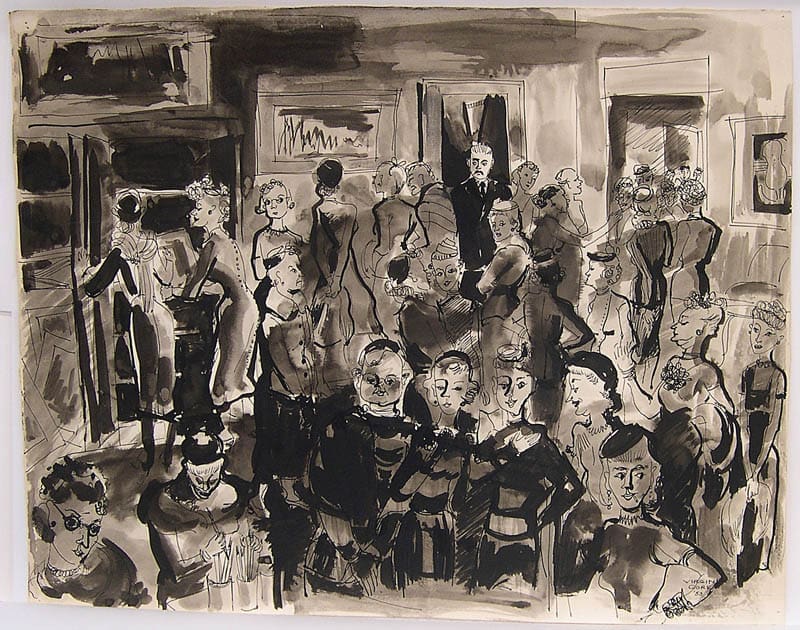
A mustachioed man enters this scene from a shadowy door in the background. A puzzled look comes across his face as he realizes he is the only man in the room.
The man is Raphael Gleitsmann, one of Akron’s most beloved artists. Gleitsmann is shown here in a drawing by his close friend and fellow artist Virginia W. Gore. Through quick linework and sketchy washes of ink, Gore suggests an environment of commotion in Gleitsmann’s studio, with the painter looking on helplessly as the women scrutinize his works and handle his brushes. Each woman’s face is uniquely detailed, suggesting that they are either portraits of actual people or caricatures of specific social types. As viewers, we can’t help but feel sympathy for Gleitsmann who is likely wondering what the women think of his work.
Does it make you anxious to have someone analyze or critique your work? Why do you think the artist chose to draw only women in Gleitsmann’s studio?
Virginia W. Gore was known for the liveliness of her drawings, a quality that is certainly on display in this work. She studied art education at the University of Akron from 1929–30 and several years later graduated from the Cleveland School of Art, now known as the Cleveland Institute of Art. Gore worked as a fashion artist at the M. O’Neil Company, a regional department store based in Akron, and exhibited her work at the Akron Art Institute (now the Akron Art Museum).
Gleitsmann was born in Dayton, OH but moved to Akron at a young age when his father received a job at Goodyear Tire and Rubber Company. Gleitsmann’s early paintings and watercolors are typical of the broader Regionalist movement, given their focus on typical Midwestern scenes of farmhouses, factories, and landscapes. After he served in World War II, however, Gleitsmann’s subject matter and style changed drastically. He created all of his post-war paintings based on his memories and sketches of the destruction he saw throughout Western Europe. These later works are somber in tone and expressionistic in their brushwork, conveying a heavy-hearted sense of loss. Although he continued to paint for nearly 10 years after the war, Gleitsmann gave up painting altogether in 1954 claiming he “really had nothing to say anymore.” The Akron Art Museum holds the largest number of Gleitsmann’s works, with over 35 of his paintings, drawings, and photographs in its collection.

